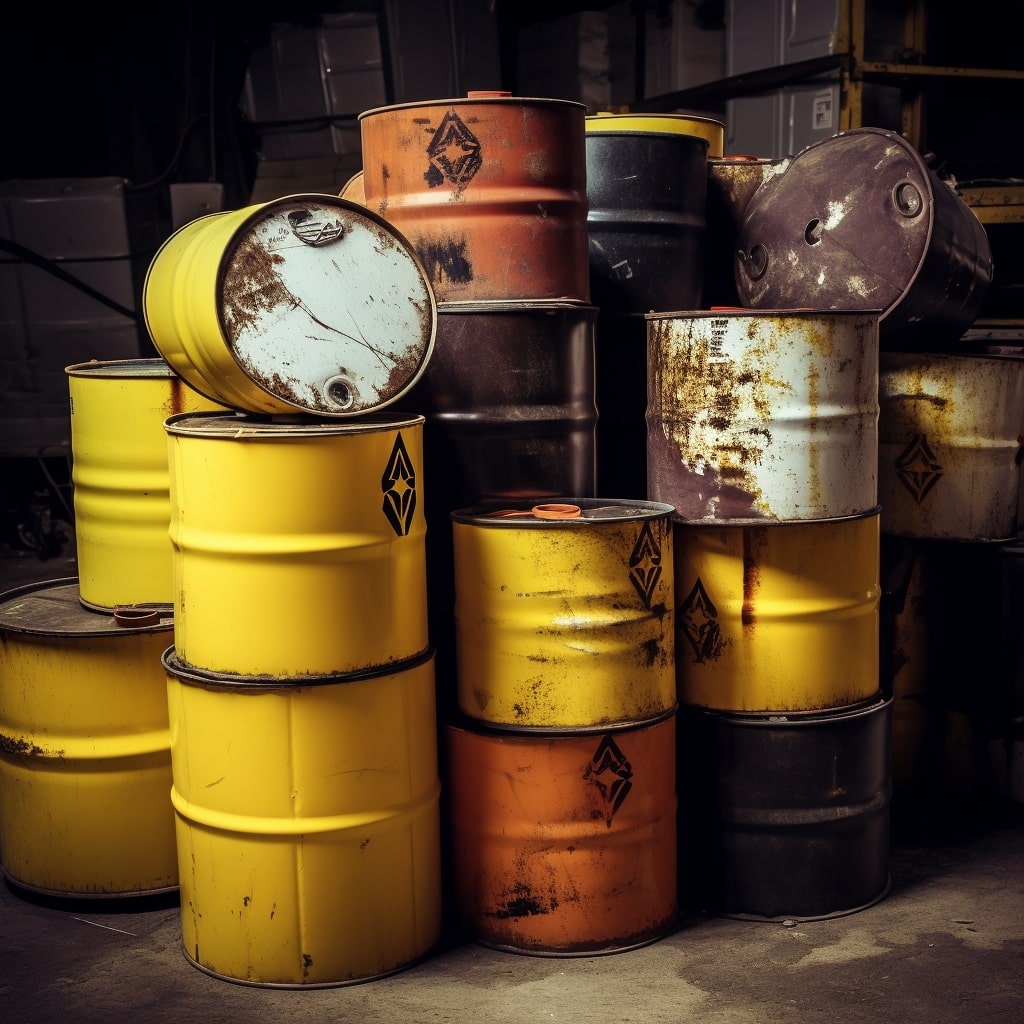This article provides an in-depth exploration of the diverse varieties of hazardous waste and the importance of proper handling and disposal.
Hazardous waste, characterized by its potential harm to human health and the environment, encompasses various forms, including liquids, solids, gases, and sludges.
The United States Environmental Protection Agency (EPA) plays a crucial role in regulating hazardous waste to ensure public safety.
Effective management of hazardous waste requires professional training and expertise to mitigate risks and prevent adverse consequences.
This article aims to provide valuable insights into the complex nature of hazardous waste and the measures required to protect human health and the environment.
Overview of Hazardous Waste Categories
In the context of the knowledge provided, it is important to have a comprehensive understanding of the overview of hazardous waste categories for proper identification, handling, and disposal.
Hazardous waste is classified into listed wastes, characteristic wastes, and mixed wastes. Further categorization includes P-list and U-list wastes.
Exploring hazardous waste regulations, environmental impacts, management strategies, disposal methods, and treatment technologies is crucial for effective hazardous waste management.
Understanding Listed Wastes
The proper identification and categorization of listed wastes are crucial for ensuring appropriate handling and disposal of hazardous waste. This involves understanding the different types of listed wastes and their specific characteristics.
Hazardous waste regulations, waste disposal methods, and hazardous waste management all rely on accurately identifying hazardous waste. By following the guidelines set by regulatory agencies, such as the EPA, we can effectively manage and dispose of listed wastes, minimizing the risks to human health and the environment.
Exploring Characteristic Wastes
Characteristic wastes, such as those exhibiting ignitability, corrosivity, reactivity, or toxicity, require specialized handling and disposal methods. Classification methods based on hazardous waste properties help in identifying and categorizing such wastes.
Understanding the environmental impact of characteristic wastes is crucial for effective waste management. Disposal regulations set by regulatory agencies ensure proper handling and disposal of hazardous waste.
Adhering to these regulations is essential to minimize the environmental and health risks associated with characteristic wastes.
Unveiling Mixed Wastes
Mixed wastes, consisting of both hazardous and radioactive components, pose unique challenges in terms of their safe handling and disposal.
The treatment and management of hazardous waste require strict adherence to regulations to ensure public and environmental safety. Transportation of these wastes requires specialized protocols to minimize the risk of accidents or leaks.
Effective disposal methods, such as incineration or deep geological repositories, must be employed to prevent contamination. Stringent hazardous waste regulations play a crucial role in safeguarding human health and the environment.
In-depth Analysis of F-List Waste
An in-depth analysis of F-List waste reveals the diverse sources and potential environmental impacts, making it imperative for regulatory agencies to closely monitor and effectively manage this category of hazardous waste. F-List waste sources include spent solvent wastes and wood-preserving wastes, among others.
These waste materials can have significant environmental impacts if not properly disposed of. Strict disposal regulations and hazardous waste management practices are necessary to mitigate these impacts. Case studies can provide valuable insights into the proper handling and disposal of F-list waste.
| F-List Waste Sources | Environmental Impact |
|---|---|
| Spent solvent wastes | Soil and water contamination |
| Wood preserving wastes | Air pollution and ecosystem disruption |
| Other non-specific sources | Potential for human health risks |
Table: Examples of F-List Waste Sources and Their Environmental Impacts.
Insights Into K-List Waste
By closely examining the specific sources and potential environmental impacts, regulatory agencies can gain valuable insights into the proper management and disposal of K-List waste, thereby ensuring the protection of human health and the environment.
K-List waste management is a crucial aspect of hazardous waste regulations.
Various hazardous waste disposal methods are employed to mitigate the risks associated with K-List waste.
The hazardous waste industry contributes to the development of effective waste management strategies.
Hazardous waste classification helps in identifying and categorizing different types of waste for appropriate handling and disposal.
Decoding P-List and U-List Wastes
Thorough comprehension of the characteristics and disposal regulations surrounding P-List and U-List wastes is imperative for ensuring proper management and preventing potential harm to human health and the environment. Understanding hazardous waste, hazardous waste management, hazardous waste disposal methods, hazardous waste regulations, and hazardous waste classification is essential.
These wastes, categorized under the EPA’s listed waste classification, require specific handling and disposal procedures to minimize risks and protect public health and the environment. Professional expertise is crucial for the safe management of these hazardous wastes.
Best Practices for Hazardous Waste Disposal
In implementing efficient and environmentally friendly methods, professionals must carefully handle and dispose of hazardous waste to minimize potential risks and protect public health and the environment.
To achieve this, they can employ various hazardous waste disposal methods, such as incineration, landfilling, and chemical treatment.
Additionally, hazardous waste management regulations provide guidelines for proper storage techniques and reduction strategies to mitigate the environmental impacts of hazardous waste.
It is crucial to prioritize safe and sustainable practices to safeguard our planet and future generations.
Conclusion
In conclusion, understanding the diverse varieties of hazardous waste is crucial for proper handling and disposal.
The categorization of hazardous waste into listed, characteristic, and mixed wastes helps in identifying their sources and potential risks.
The effective management of hazardous waste requires professional expertise and adherence to regulations set by the EPA.
By following best practices for disposal, we can mitigate risks and protect human health and the environment from the harmful effects of hazardous waste.

